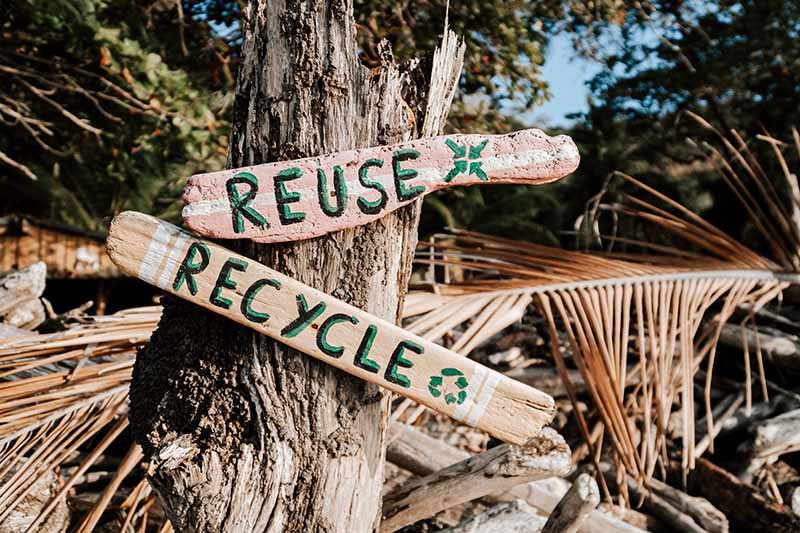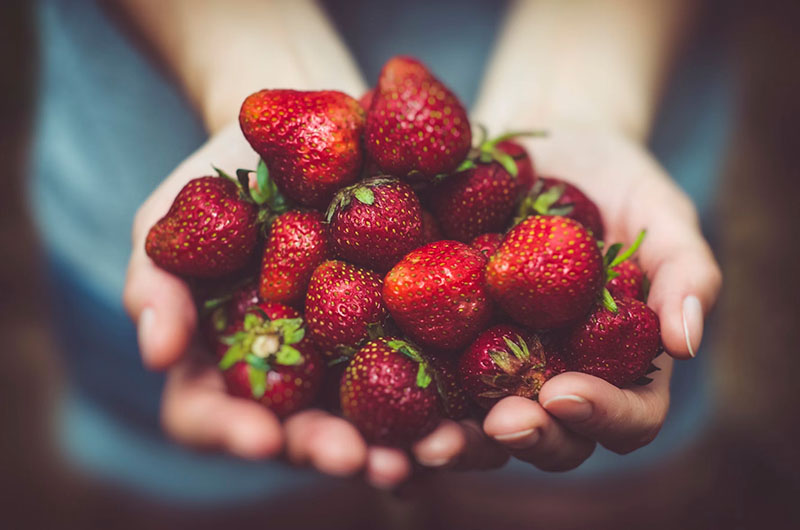15 Tips on How to be More Eco-Friendly at Home

Sustainable living can range from recycling plastic bottles to installing solar panels on your roof. No matter how much time, money, or energy you have to spare, there’ll always be a way to make eco-friendly changes to your lifestyle. If you’re currently asking yourself how to be greener, here are 15 eco tips to help you get started on being more sustainable at home.
How to Make your Home More Sustainable
1. Insulate your house
Insulation holds the heat inside your home for much longer. If your insulation has gaps or is old and incomplete, the warmth from running your heating can seep out and dissipate. This makes your boiler less efficient and forces you to keep the heating on for longer. Filling these gaps in your home insulation will allow you to run the boiler for much shorter periods of time to stay warm, saving both money (potentially upwards of £200 a year) and the environment at the same time.
2. Invest in double glazed windows
While you’re filling the gaps in your insulation, it’s worth checking whether your home has single or double-glazed windows installed. For an eco-friendly home, double glazing is the way to go! Double glazing helps to trap heat on the inside, keeping you cosy without having to overwork your boiler. As a bonus, it also blocks out more noise!
Also, ensure that your windows are maintained as blown seals in double-glazing are less efficient at maintaining heat in the home, and gaps in the windows cause draughts making the house lose heat.
3. Replace your boiler
A wide range of energy efficient boilers are now available in the UK. Switching your old boiler out for a new one can help you reduce your household’s carbon emissions, as new models are designed to operate more sustainably. Electric, biomass, or modern gas boilers are all great options for an eco-friendlier home.
Another option is doing what the Nordics do, which is replacing a boiler with an air-sourced heat pump to heat up the home. Though the technology is now only starting to gain traction in the UK market, in places like Norway they have been a popular option since the early 00s, and now 60% of households have a heat pump installed.
4. Install LED lights
Only a very small percentage of the energy produced by LED bulbs translates into heat, while a much larger amount goes directly into light. Replacing old halogen bulbs with LEDs is better for both the environment and for your eyes, as LEDs are much brighter light sources! Additionally, LEDs reduce the fire risk of lighting, as halogen bulbs produce large amounts of heat and can spark if they’re old or poorly installed.
5. Switch to solar power
If your home has a suitable roof, it’s worth looking into the installation of solar panels. Solar panels allow you to run your household appliances from solar power rather than mains electricity, cutting down your reliance on fossil energy sources. Solar power is a renewable energy source, reducing your carbon footprint to almost nothing. As an extra bonus, you’ll also see a huge cut to your energy bills, and when combined with a heat pump, they can help heat your home for free on sunny colder days!
How to Live an Eco-Friendly Lifestyle

6. Reduce, Reuse, Recycle
Whatever your personal circumstances, reducing, reusing, and recycling is something that anyone can do at home!
‘Reduce’ refers to reducing the waste you produce by using biodegradable objects such as wooden cutlery, cellophane, and paper flowerpots. You can also reduce your waste by switching to refillable cleaning bottles and soaps. A good rule of thumb is to analyse your waste and evaluate what changes you can make in each area to reduce it.
Reusing refers to switching from single-use objects to reusable objects such as grocery bags, water bottles, and straws. You can also repair broken objects or use the materials for other purposes like using an old plastic bottle to make a wormery for the kids.
Recyclable materials will be marked with one of several recycling symbols that are easy to recognise. Every council provides recycling bins, but if your local bin truck won’t accept certain materials, you can travel to a recycling station in your local area to drop them off. Make sure to check what your local council is willing to recycle, as sending the wrong materials to be recycled can cause issues with the process. You can visit our recycling page for more recycling tips.
7. Make your own compost
Creating a compost pile is not only good for the environment, but also great for your garden! You can use compost to fertilise your plants, as well as attract insects and their predators such as birds, frogs, and toads. Compost will also increase your garden’s soil health, helping your homegrown plants to thrive.
8. Switch off your appliances
Another change you can make to your lifestyle is switching off and unplugging appliances after you’ve used them. It can be tempting to leave the microwave plugged in to display the time, but it’s much more eco-friendly to switch it off at the socket whenever you aren’t using it. Look around your house to analyse where you frequently leave plugs left on, and whether you can take steps to turn them off as part of your routine.
9. Use public transport
If you live in an area with access to public transport, hopping on the bandwagon (literally!) is one of the biggest steps you can take towards reducing your personal carbon footprint. If it’s possible to take the tram, train, or bus rather than a car, it’s always better to do so to reduce your impact on the ecosystem. One bus carrying 50 people produces far less greenhouse gas than 50 individual cars!
10. Walk whenever you can
Similarly, to the above, choosing to walk to your destination produces no greenhouse gas at all, and is also great for your health and mood! Making small changes to your daily routine such as walking the kids to school, to fetch groceries, or to go to a cafe or restaurant is a great way to be more environmentally friendly.
11. Drive an eco-friendly car
If you can afford it, an electric car is much better for the environment than petrol or diesel vehicles. By swapping your car out, you can reduce the carbon footprint of your daily life as well as offset the impact of errands such as visiting your local recycling centre and school runs.
How to be more Sustainable with Food

12. Buy local produce
When buying groceries, it’s important to consider where they come from. Avocados flown in from California have a relatively high carbon footprint, while apples from a local orchard are much better for the environment. Search for packaging labels that mark food as being sourced from the British Isles, since supporting local farming is far more sustainable than buying groceries from further afield.
13. Order home delivery
If you frequently drive to the supermarket, ordering home delivery can be a positive change for both yourself and the environment. With home delivery, one vehicle is making the same journey that multiple vehicles would be taking if each customer decided to drive.
14. Eat less meat
Livestock farming is one of the greatest producers of greenhouse gases in the world. While meat can be good for you, buying less meat is a small change you can make to reduce the demand for meat in the UK. In turn, this will reduce the number of animals being farmed and prevent those greenhouse gases from being released into the atmosphere. It’s a long game, but it produces results!
15. Grow your own food
Whether you have an allotment, a large garden, or a small yard, growing your own veggies is a great way to experience the fruits of your labour at home and contribute to sustainable gardening. Salads, carrots, and potatoes from your own garden are far better for the environment than investing in shipping and transport to bring your food to you - plus you get to experience your garden growing at the same time!
At HIPPO, we pride ourselves on our sustainable attitude towards daily life and waste. Check out our sustainability page to find out more about the steps we’re taking to help the environment.

